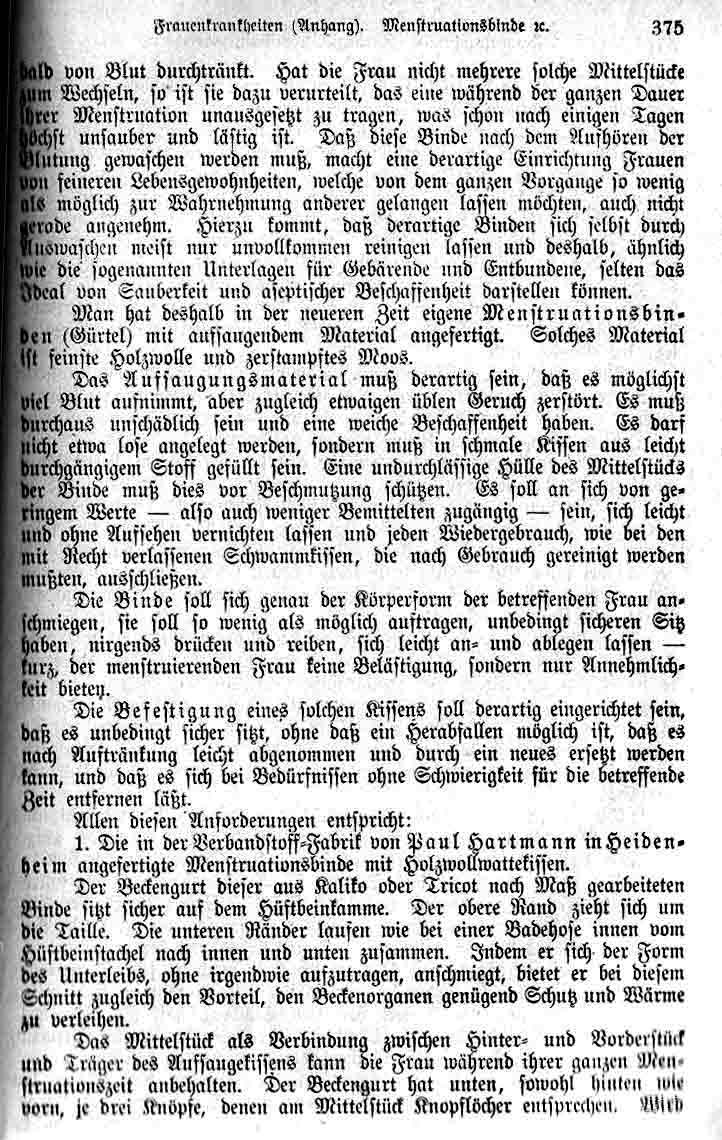Read an earlier discussion of this: What did European and American women use for menstruation in the 19th century and before?
See the B-ettes tampon. See the tampon directory.
Ads for teens (see also introductory page for teenage advertising): Are you in the know? (Kotex napkins and Quest napkin powder, 1948, U.S.A.), Are you in the know? (Kotex napkins, 1953, U.S.A.), Are you in the know? (Kotex napkins and belts, 1964, U.S.A.), Freedom (1990, Germany), Kotex (1992, U.S.A.), Pursettes (1974, U.S.A.), Pursettes (1974, U.S.A.), Saba (1975, Denmark)
More ads for teens: See a Modess True or False? ad in The American Girl magazine, January 1947, and actress Carol Lynley in "How Shall I Tell My Daughter" booklet ad (1955) - Modess . . . . because ads (many dates).
CONTRIBUTE to Humor,
Words and expressions about
menstruation and Would
you stop menstruating if you could?
Some MUM site links: homepage
| MUM address & What
does MUM mean? | e-mail the museum |
privacy on this site | who runs this museum?? |
Amazing women! | the art of menstruation | artists (non-menstrual) | asbestos | belts | bidets
| founder bio | Bly, Nellie | MUM board | books:
menstruation and menopause (and reviews) | cats
| company
booklets for girls (mostly) directory | contraception and religion | costumes | menstrual cups | cup
usage | dispensers | douches, pain, sprays | essay directory | extraction | facts-of-life booklets for
girls | famous women in
menstrual hygiene ads | FAQ
| founder/director biography | gynecological topics by Dr.
Soucasaux | humor | huts | links
| masturbation | media coverage of MUM | menarche booklets for girls
and parents | miscellaneous
| museum future | Norwegian menstruation exhibit |
odor | olor
| pad directory | patent medicine | poetry directory | products, current | puberty booklets for girls and
parents | religion | Religión y
menstruación | your remedies
for menstrual discomfort | menstrual products safety | science
| Seguridad de productos para la
menstruación | shame
| slapping, menstrual | sponges | synchrony | tampon directory | early tampons | teen ads directory | tour of the former museum (video) | underpants & panties directory
| videos, films directory |
Words and expressions about menstruation | Would you stop menstruating if you could? | What did women
do about menstruation in the
past? | washable pads
Leer la versión en español de los siguientes temas: Anticoncepción y religión, Breve reseña - Olor - Religión y menstruación - Seguridad de productos para la menstruación.



The
Museum of Menstruation and Women's Health
Some European women regularly menstruated
into their clothing:
More evidence (Part 2)
A 19th-century German comments on menstruation, with a proposal for a menstrual pad and belt: from Friedrich Eduard Bilz's Das Neue Naturheilverfahren (about 1890)Read the discussion here.(translated text continued from here)Translation by Harry Finley (the original text is at the bottom of this page):soon becomes soaked with blood. If the woman doesn't have several such middle pieces for changing she's condemned to wear the piece that was already very dirty and burdensome after a few days for the whole period. That this pad must be washed after menstruation stops is not a pleasant duty for finer women, who want others to know as little as possible about the whole process. In addition, because the pad can't be perfectly cleaned, just like those for women bearing children and after having delivered, it's seldom the ideal of cleanliness and asepsis.Recently, therefore, one has made pads (with belt) with absorbent material specifically for menstruation. The material is fine wood shavings and pulverized moss.The absorbent material must be fine enough to hold as much blood as possible and destroy any bad smell. It must cause no harm and be soft.It can't be loosely held but must sit in a narrow "pillow" made of quite porous material. The middle piece must have an impermeable casing, preventing soiling. It must be cheap - thus enabling poorer women to use it - and easily and without fuss disposable, unlike the sponge, which has to be cleaned after use.The pad must fit exactly the form of the woman's body and ride up as little as possible, sit perfectly, nowhere fold and rub, easily be put on and taken off - in short, offer the menstruating woman comfort, not annoyance.The attachment of such a pad should be made in such a way that it sits completely securely, not letting it fall, and that it's easily removed after soaking and replaced with a new one.The following product meets these requirements:
|
(continued)
©2004 Harry Finley. It is illegal to reproduce or
distribute work on this Web site in any manner or
medium without written permission of the author.
Please report suspected violations to hfinley@mum.org
